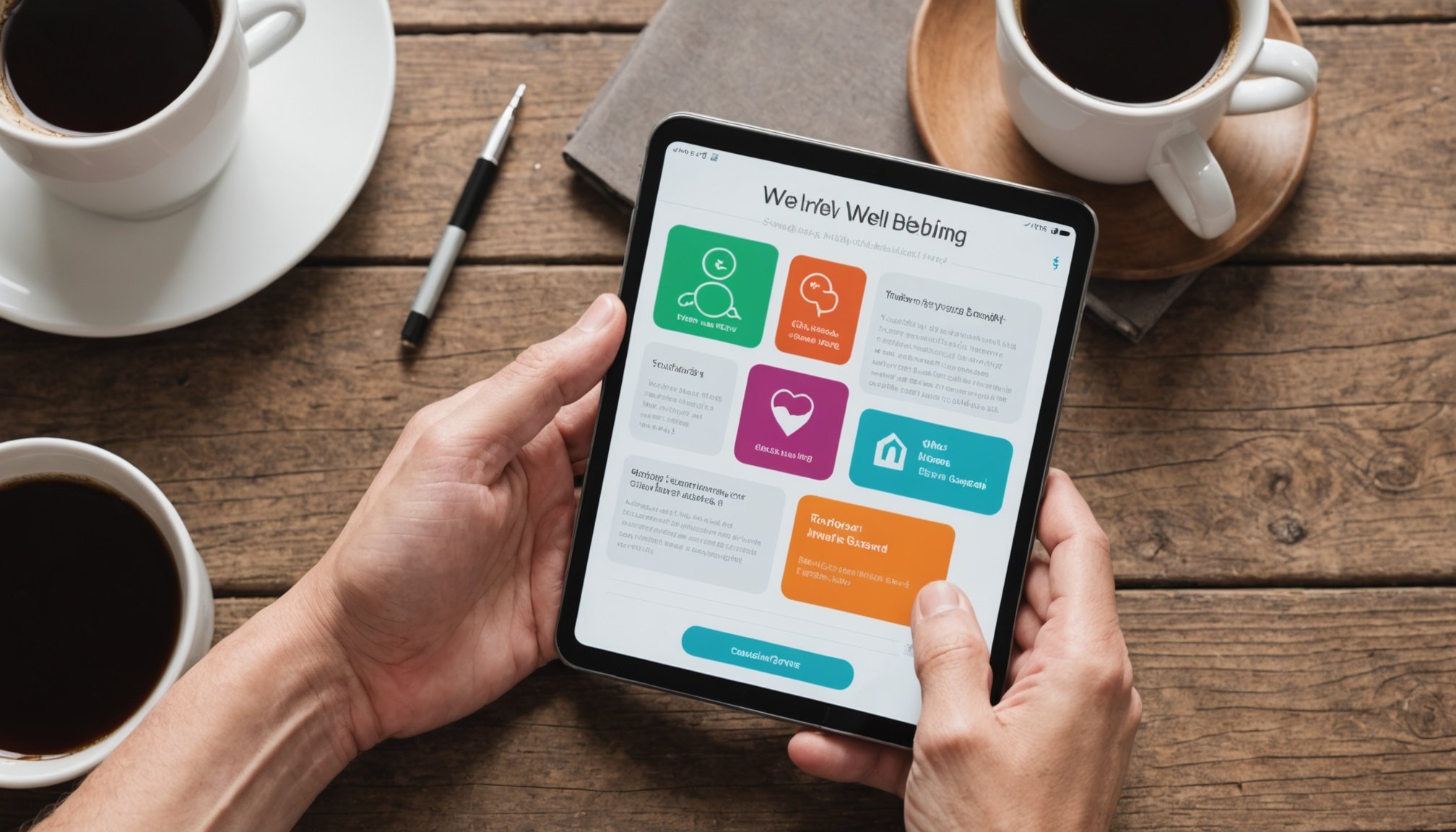Understanding Digital Health Journaling
Digital health journals are transformative tools that integrate technology into personal health tracking. They enable individuals to record, manage, and reflect on their health data efficiently. By using smartphone apps, users can seamlessly keep a record of their physical activity, diet, mental health, and more. This modern approach serves a dual purpose: providing both immediate insights and a comprehensive overview of health trends over time.
Maintaining a health journal through a smartphone app offers several key benefits. Firstly, it promotes regular, consistent logging due to ease of use and accessibility. Users can log information anytime and anywhere, which enhances data accuracy and completeness. Moreover, smartphone apps often incorporate features like reminders, analysis tools, and even health insights powered by artificial intelligence. These additions not only streamline the process but also provide a deeper understanding of patterns and correlations.
Have you seen this : Revamp your living room: the ultimate smartphone guide to crafting an impressive surround sound home theater
When comparing traditional and digital journaling, digital solutions stand out for their convenience and enhanced capabilities. Traditional methods, limited by paper-based tracking, lack the dynamic feedback and accessibility of smartphone-based tools. Digital platforms provide real-time feedback and can easily be integrated with other health technologies, making them a superior choice for comprehensive health management.
Setting Up Your Digital Health Journal
Creating a health journal setup on your smartphone leverages its advanced features to track and manage wellness more effectively. This initial setup can transform your device into a personal health assistant.
This might interest you : Enhance your mobile internet experience: mastering the best smartphone hotspot configurations!
Choosing the Right App
Selecting the appropriate app is crucial. Many options are available, each with unique features suited to different health goals. For example, MyFitnessPal is beneficial for tracking calorie intake, while Headspace focuses on mental health through meditation exercises. Explore a variety of apps to find one that aligns with your personal health objectives and offers the functionality you need.
Customizing Your Journal Settings
Personalization is key. Most apps allow users to tailor settings to their preferences, enhancing the overall experience. Adjust notifications to remind you of important tasks like taking medications or meeting daily step goals. Tailoring these settings helps create a more engaging and effective journaling routine.
Essential Features to Include
Include key health metrics within your journal for a comprehensive wellness overview. Track vital signs such as heart rate, sleep patterns, and daily activity levels. Many apps integrate with wearable devices, providing more detailed insights and offering a holistic view of your health progress.
Step-by-Step Guide to Tracking Health Metrics
Tracking health metrics effectively requires a thoughtful approach to both data collection and entry. To begin, consider including common health metrics such as blood pressure, heart rate, daily step count, and dietary intake in your journaling process. These basic metrics offer valuable insights into your overall health over time.
Data entry is crucial for maintaining the accuracy of your health records. Employing effective methods like consistent journaling can simplify this task. Consider using a structured format where you allocate specific sections for each metric. This organisation helps reduce errors and ensures that you can easily refer back to previous entries.
Incorporating digital tools can enhance the health metrics tracking process. Many smartphones come equipped with features that can automate data capture. For instance, leveraging health apps or wearables can automatically log information like steps and heart rate, reducing the manual effort involved. Furthermore, setting reminders or alerts can help maintain regularity in data entry, ensuring that none of your health metrics are overlooked.
By combining structured journaling with technology, you can create a robust and efficient system for health metrics tracking that suits your lifestyle and informational needs.
Best Practices for Consistency and Maintenance
Building a consistent journaling routine is pivotal for those who wish to reap the full benefits of maintaining a journal. Health journal consistency can start with creating a dedicated time each day for journaling. Establishing this time as a non-negotiable part of your daily activities makes it easier to treat journaling as a daily habit, increasing the likelihood you stick with it.
Another practical strategy is using technology to set reminders and notifications. Apps and digital tools can prompt you to write, serving as accountability partners. These notifications can anchor journaling in daily habits that nurture health and personal growth, which makes it more challenging to forget.
Staying motivated and engaged in journaling also requires understanding why you’re doing it. Revisiting your goals regularly can bolster your enthusiasm. Mixing up the way you journal—such as switching between written entries, drawings, or voice notes—keeps the process fresh. Remember, the ultimate goal is creating a routine that aligns with your lifestyle and personal objectives, ensuring your journaling practice remains a motivating and engaging part of your day.
The Impact of Health Journaling on Mental and Physical Well-Being
Health journaling has become an essential tool for enhancing both mental health benefits and physical health tracking. By documenting daily experiences, individuals can experience significant wellness improvements. This practice supports mental clarity and emotional well-being by providing a private space to process thoughts and feelings. Capturing emotions on paper allows for better emotional regulation and stress management.
Consider a case study involving a group of individuals who practiced health journaling over six months. They reported reduced anxiety levels and an improved ability to manage daily challenges. Furthermore, the regular tracking of physical health data, such as exercise routines and dietary habits, enabled participants to identify patterns and make informed adjustments, ultimately leading to improved overall health.
However, while the benefits are numerous, potential challenges like consistency and self-critique can arise. Overcoming these obstacles involves setting small, achievable journaling goals and focusing on progress rather than perfection. By approaching health journaling with patience and persistence, individuals can harness the full potential of mental and physical well-being enhancements. Engaging in this introspective practice cultivates a deeper connection between mind and body, fostering a holistic approach to personal health.
Avoiding Pitfalls in Digital Health Journaling
Navigating digital health journaling can be tricky without the right guidance. Mistakes often lie amidst enthusiasm and automation. Recognizing and overcoming these health journaling pitfalls ensures sustaining your health journey.
Recognizing When You’re Losing Interest
When your entries start to dwindle or feel like a chore, it’s a sign that your journaling routine needs adjustment. Instead of daily logs, opt for weekly check-ins, allowing space for reflection rather than obligation. Keep it interesting by integrating various media or prompts.
Understanding Data Privacy Concerns
Data protection isn’t just an option; it’s a necessity. Few people realize the magnitude of personal information stored in digital journals. Adopting best practices for keeping personal data secure ensures peace of mind. Start by using platforms with robust encryption, and always activate two-factor authentication to bolster your defense against breaches.
Managing Overwhelm from Tracking Too Much
Tracking too many metrics can lead to stress. If you’re overwhelmed, it’s time to focus on meaningful and manageable data. Adopt strategies to simplify the journaling process without sacrificing quality: prioritize relevant metrics, and periodically revisit your goals to reassess what’s necessary. Your health journal journey should inspire, not burden.











